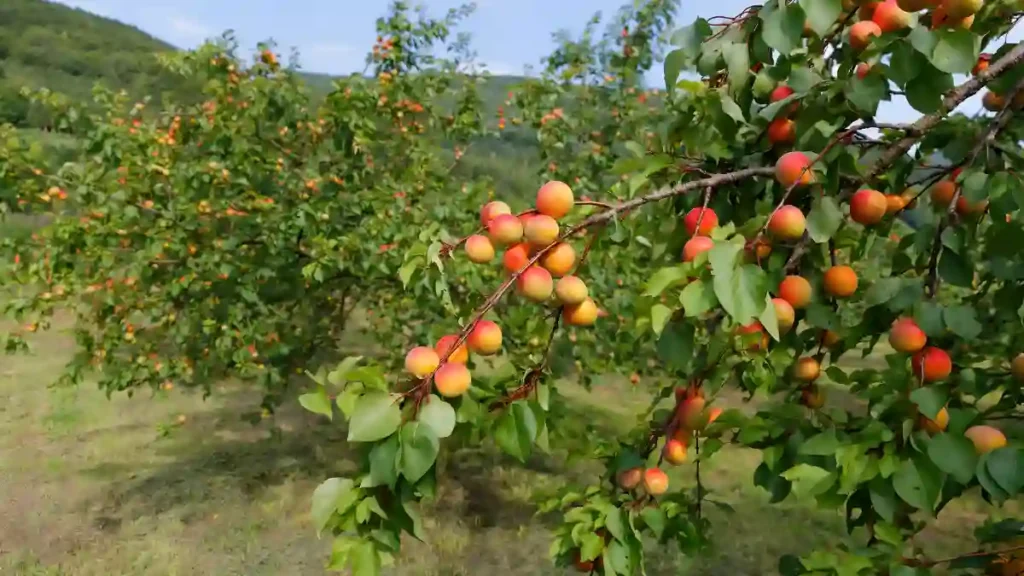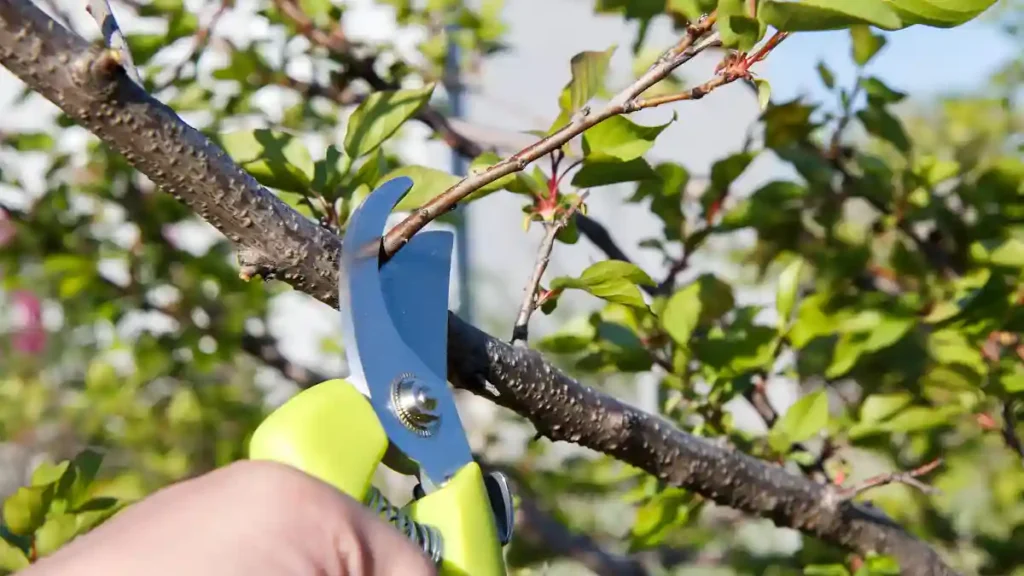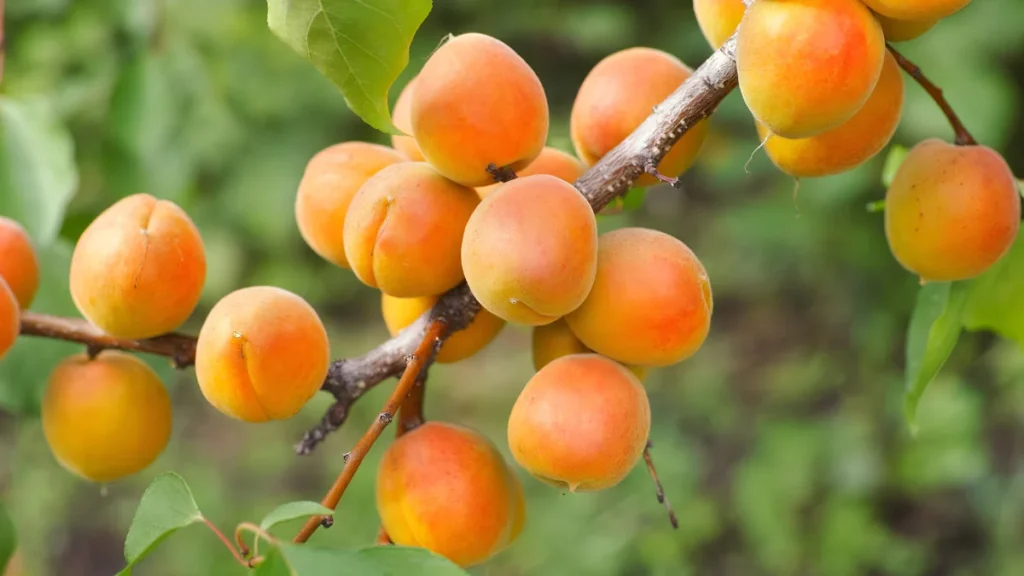The little deciduous apricot tree (Prunus armeniaca) is prized for its mouthwatering golden-orange fruit. Originating in China, it has been farmed for millennia and has extended to several regions around the globe, including the Mediterranean and Central Asia. The tree usually reaches a height of 8 to 12 meters. It has fragrant white or pink flowers that bloom in the early spring, along with wide, heart-shaped leaves. They bear fruit best when trained against a sunny wall and are cultivated similarly to peach trees and nectarines, which are near cousins of each other. The tree grows best on soil that drains properly and in an area with moderate summer and winter temperatures. To make sure an apricot tree will flourish in your location, carefully consider the USDA Hardiness Zones before making your purchase.
We will show you how to grow an apricot tree:
1. Selecting the proper variety of apricot tree
Selecting the right apricot tree variety for your climate and soil type is crucial for successful cultivation in temperate areas with cold winters and mild summers.
- Moorpark: A well-known cultivar that yields big, delicious fruits.
- Tilton: This cultivar is well-known for both its superb fruit quality and adaptability to a range of environmental conditions.
- Royal: This cultivar is well-liked for its steady yield and is best suited for areas with warm, dry summers.
2. The best place to plant apricot tree
- Apricots require at least 6 to 8 hours of sunshine every day to grow. Pick a spot that is protected from severe winds and has well-draining soil. Keep an eye out for any adjacent structures or trees that could shadow an apricot tree. Choose a planting location shielded from chilly winter winds if you live in Zone 6 or lower, where plant hardiness may be difficult to achieve. Apricot flowers are vulnerable to frost damage in the early spring, so stay away from low-lying regions where frost might accumulate.
- Apricot trees should not be grown in irrigated lawns in dry areas like the Southwest desert, as they require more water for growth than turf.
3. When and how to plant an apricot tree
- When the tree is still dormant, late winter or early spring, is the ideal time to grow apricot trees. As a result, the roots might take hold before the growth season starts.
- Before planting apricot trees, ensure a well-drained, loamy soil with a pH of 6.0 to 7.5, and consider adding organic materials like compost or peat moss for increased drainage.
- Create a deep, wide hole twice the tree’s root ball, ensuring the grafted tree’s bulge is 2-3 inches above the soil line. After watering, backfill the hole with a mix of dirt and organic compost.

Apricot tree care guidelines
1. Watering
- Apricot trees require regular rainfall and watering to maintain soil moisture, but avoid overwatering to prevent root rot.
- Spread an organic mulch layer of two to three inches around the base of the tree to help keep the soil wet and keep weeds at bay. To avoid fungal infections, keep the mulch a few inches away from the tree trunk.
2. How to fertilize an apricot tree
- To ensure optimal growth and fruit output, fertilize your apricot tree in early spring and early summer using a balanced fertilizer like 10-10-10. Apply the fertilizer at the drip line, avoiding overfertilization to avoid excessive foliage development and fruit yield loss.
3. When and how to prune an apricot tree
- Annually prune apricot trees in late winter, trimming unhealthy, damaged, suckers, and branches to form a V shape. Remove closely spaced growth on main branches, aiming to remove 25% of interior growth annually for fruit ripening.
- Apricot trees require trimming and thinning to remove excess fruit, ensuring each young apricot is 4 to 6 inches apart. This practice preserves the tree’s health by allowing the remaining fruit to reach maturity.
4. Control of diseases and insects
- Apricot trees face pests and issues like root infections, cankers, and weed eaters. To prevent cankers, shield lower limbs and trunk from weed eaters and lawnmowers, and if possible, cut away diseased timber 12 inches below symptoms.

Conclusion:
You may effectively establish a fruitful and healthy apricot tree in your yard by using the advice in this article. To guarantee that your tree flourishes and yields plenty of fruit, every step—from choosing the appropriate species to trimming and insect control—is essential.
Certainly! If you’d like to learn more, please consider following our WhatsApp Channel: Harvest Gardening
A frequently asked questions:
Q1: How to propagate an apricot tree?
A1: You may utilize techniques like grafting, budding, or seeding an apricot tree to multiply it. The most dependable method is to graft onto rootstock; growing from seeds may take longer and provide inconsistent fruit quality.
Q2: What is the best fertilizer for apricot trees?
A2: Apricots prefer low nitrogen, high potassium, and phosphorus fertilizers like chicken manure, worm castings, worm juice, and seaweed solution during the growth season. Potash is also beneficial.
Q3: What is a dwarf apricot tree?
A3: Dwarf apricot trees, a smaller variation of the common apricot tree, grow 6-8 feet and are ideal for small gardens or container planting, yet still produce full-sized apricots.



